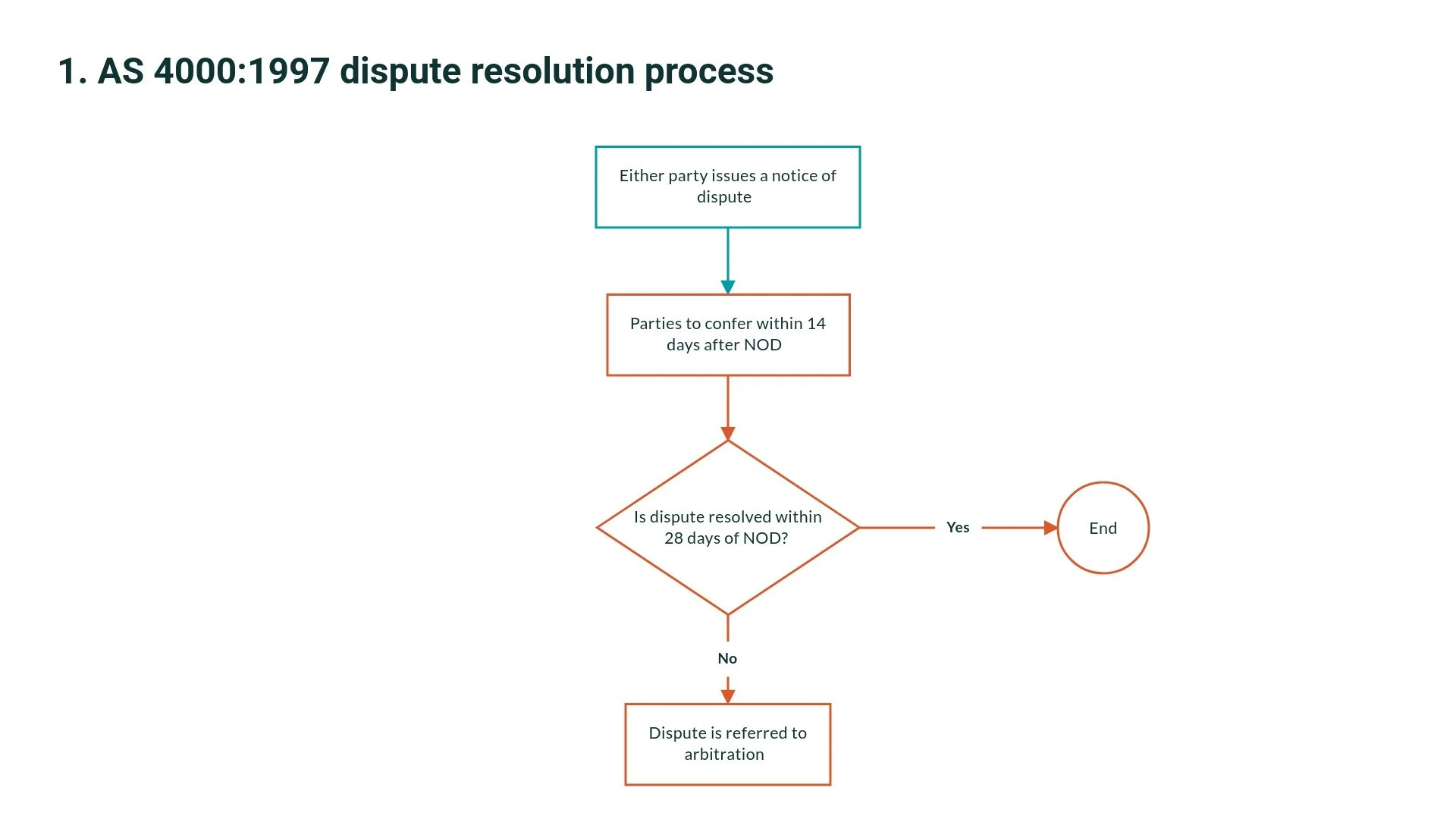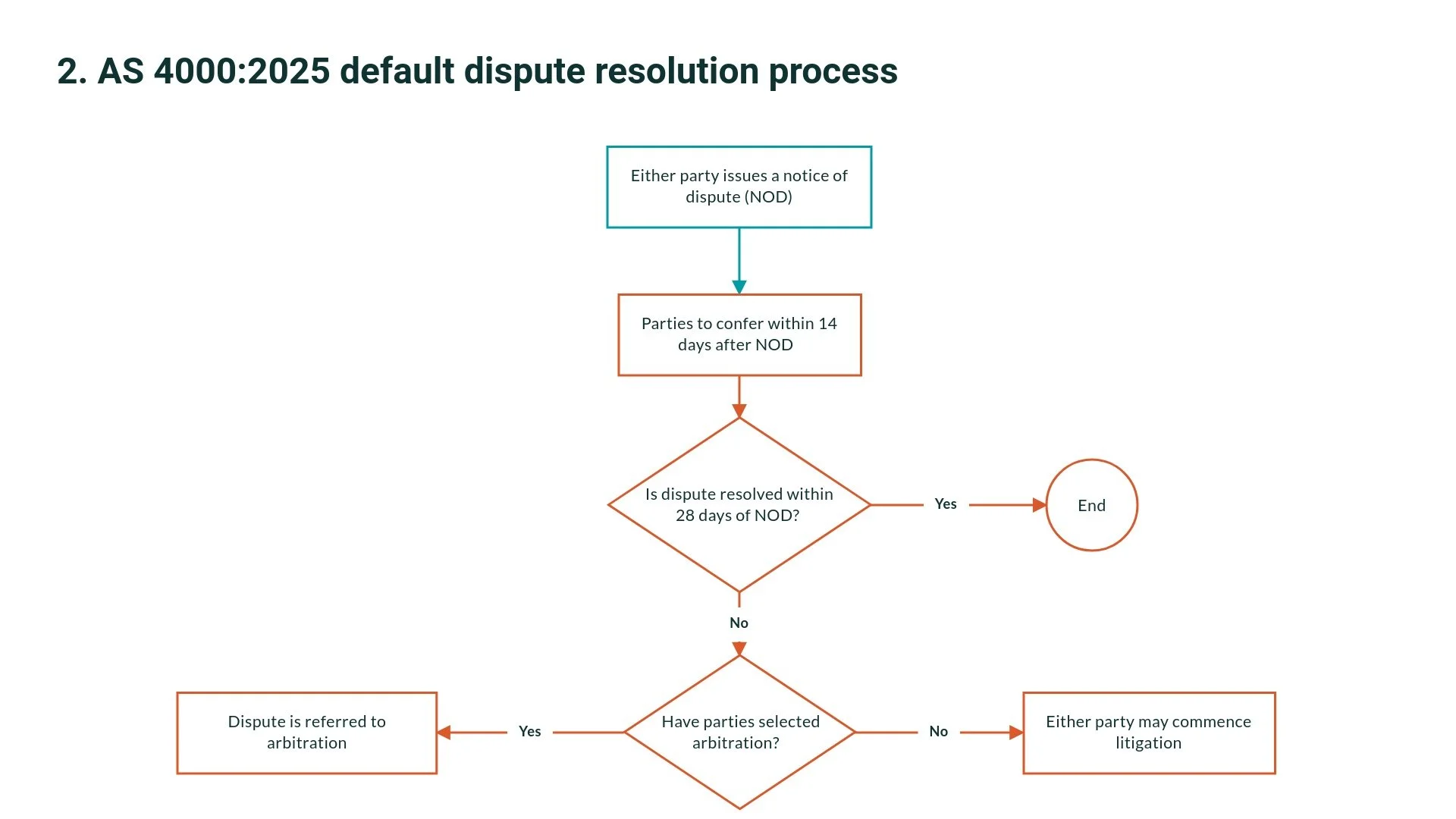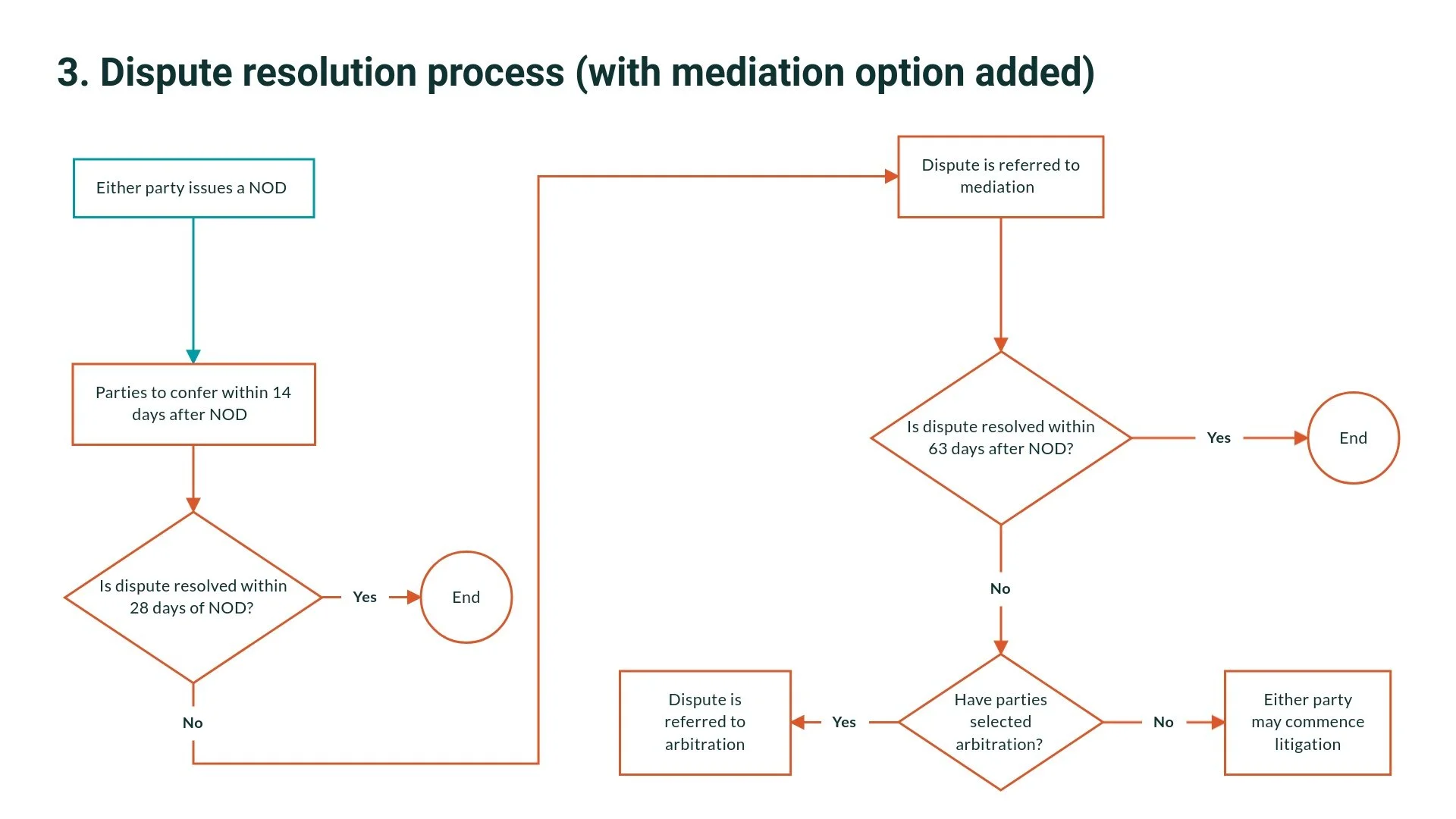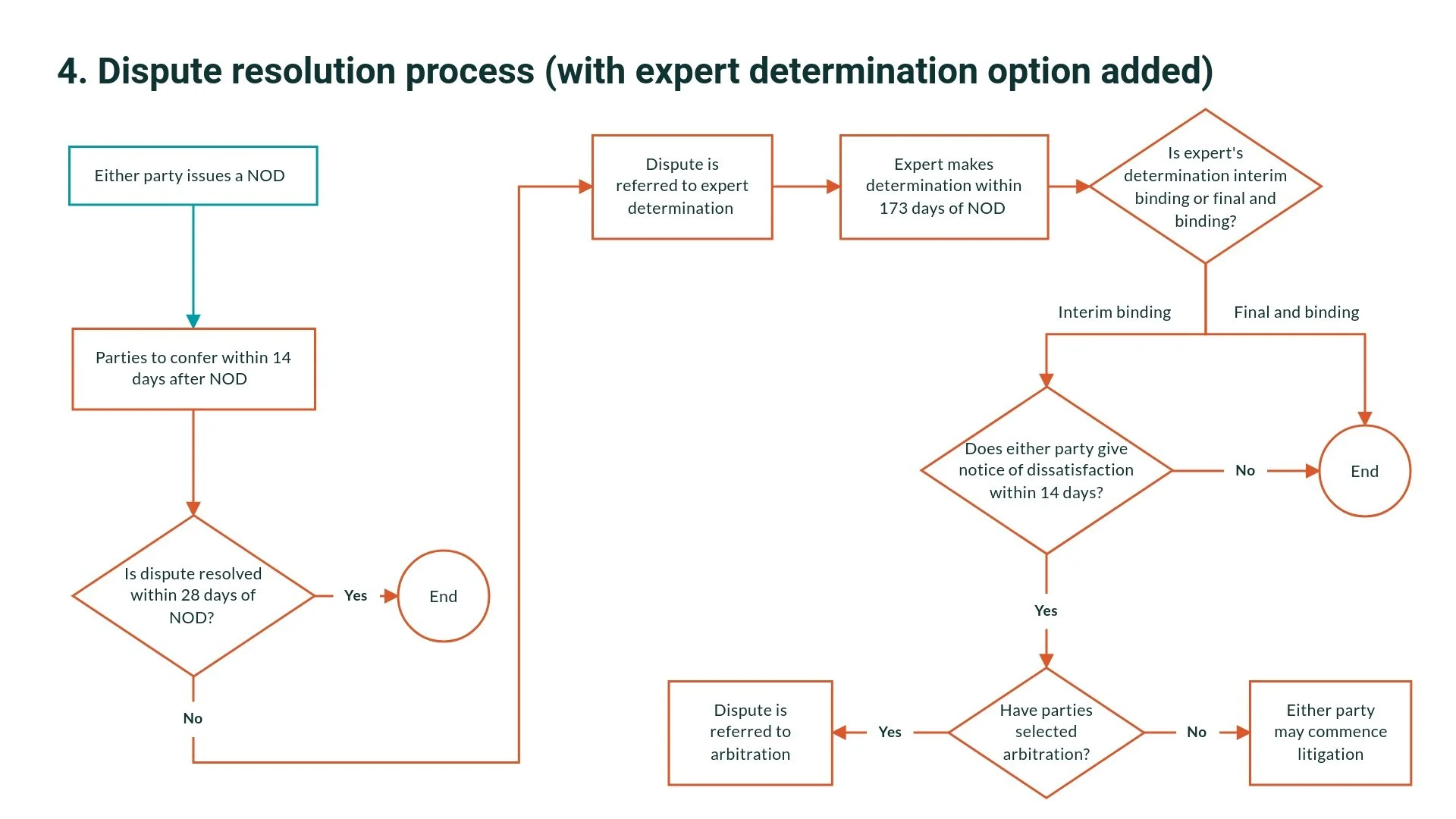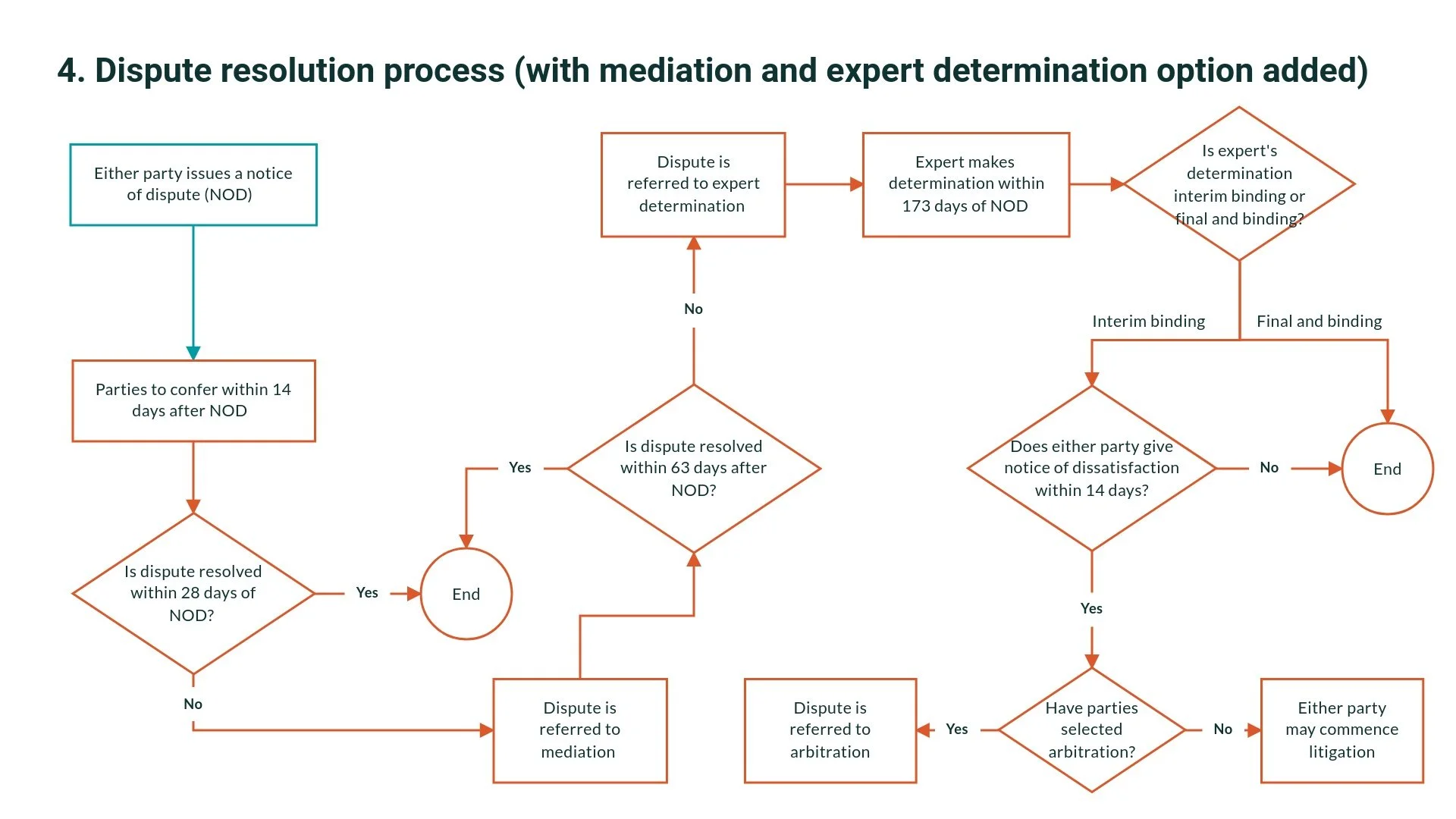New dispute resolution options in AS 4000:2025
The most significant change made to AS 4000 as part of the 2025 update is the inclusion of additional dispute resolution options that the parties can select.
Current dispute resolution process (1997 edition)
The 1997 edition requires all disputes to be resolved firstly by negotiation, and if an amicable resolution cannot be achieved within 28 days, then by arbitration. This process is shown below.
Default process under 2025 update
The 2025 update allows the parties to choose between arbitration and litigation as the final step of the process. If no choice is made, litigation applies.
Additional dispute resolution processes
The 2025 update also allows the parties to supplement or replace the default procedure with the following additional alternative dispute resolution methods:
mediation; or
expert determination; or
mediation and expert determination; or
dispute avoidance board.
The selection will be made by selecting one or none of these options within Annexure Part A of the contract. If none are selected, the default procedure will apply.
Adding mediation to the process
If the mediation option is selected, then mediation will be added as a new step of the dispute resolution procedure after negotiation and before arbitration. The resulting procedure is shown below.
Adding expert determination
If expert determination is selected, then expert determination will become the second step of the dispute resolution procedure, if negotiations fail to resolve the dispute.
The parties must specify in Annexure Part A whether the expert’s determination will be interim binding or final and binding.
If it is interim binding, then either party may give notice that it is dissatisfied with the determination within 14 days, in which event the dispute will be referred to arbitration.
If the expert’s determination is final and binding, it becomes the final step of the process.
Adding mediation and expert determination
If the mediation and expert determination option is selected, then the dispute resolution procedure becomes as follows.
Adding a Dispute Avoidance Board
If a dispute avoidance board is selected, the parties can select either a 1-person or a 3-person Dispute Avoidance Board.
As soon as practicable after signing the construction contract, the parties are to execute a Dispute Avoidance Board Agreement in the form then published by the Dispute Resolution Board Foundation Region 3 on its website and use all reasonable endeavours to procure its execution by the Dispute Avoidance Board Member(s).
If the Dispute Avoidance Board Agreement has not been fully executed by the time a notice of dispute is issued, then the default dispute resolution procedure of negotiation followed by arbitration will apply.
The DRBF’s template Dispute Avoidance Board Agreement provides that the DAB will have two functions: a dispute avoidance function and a decision-making function. The rules for the exercise of each function are set out in the template agreement. You can learn more about the DRBF’s new template DAB Agreement via the link at the end of this article.
The parties must specify in Annexure Part A whether any decision of the DAB will be either interim binding or final and binding. If it is interim binding, then either party may give notice that it is dissatisfied with the decision within 14 days, in which event the dispute will be referred to arbitration. If no such notice is given, the decision becomes final and binding.
The resulting dispute resolution process is shown below
Relevant Rules
The relevant rules of the Resolution Institute will apply to any mediation, expert determination or arbitration, unless the parties specify alternative rules. Any dispute avoidance board will conduct itself per the Dispute Avoidance Board Agreement that establishes it.
Conclusion
The additional optionality within the dispute resolution procedure, particularly the option of a dispute avoidance board, is a welcome addition to AS 4000:2025.
The distinguishing feature of a dispute avoidance board is the proactive dispute avoidance role. All other dispute resolution methods are reactive, as they are only deployed after a formal notice of dispute has been given. By this time, the opportunity to avoid the dispute is lost, because positions have hardened.
The power of a proactive dispute avoidance board is evidenced by the statistics. DABs have been used on 119 projects in Australia with a combined contract value exceeding A$75 billion (in dollars of the day). On none of these projects has a dispute proceeded to a litigation judgment or arbitral award. Rather, all disputes have been resolved within the project with the assistance of the dispute avoidance board.
